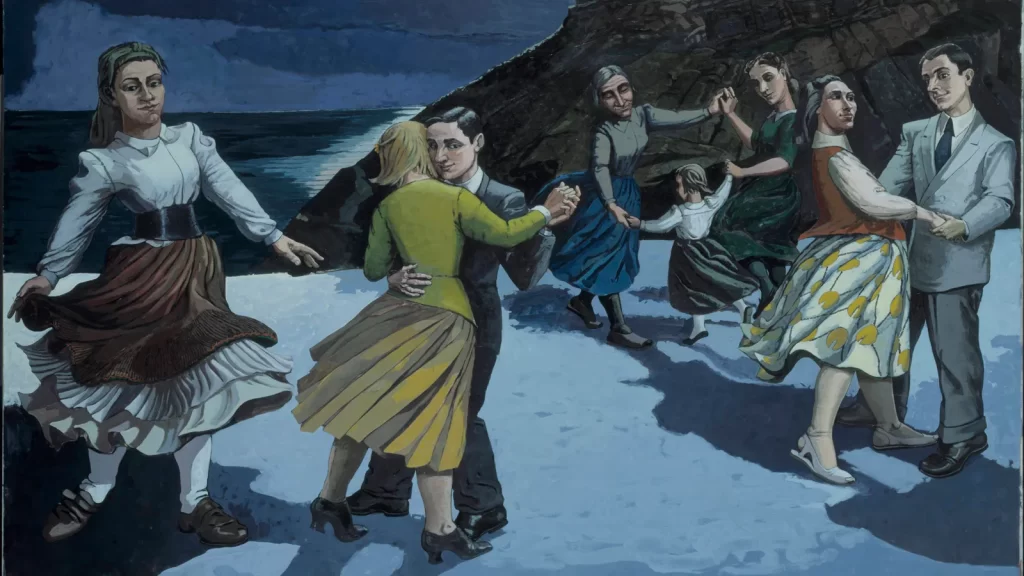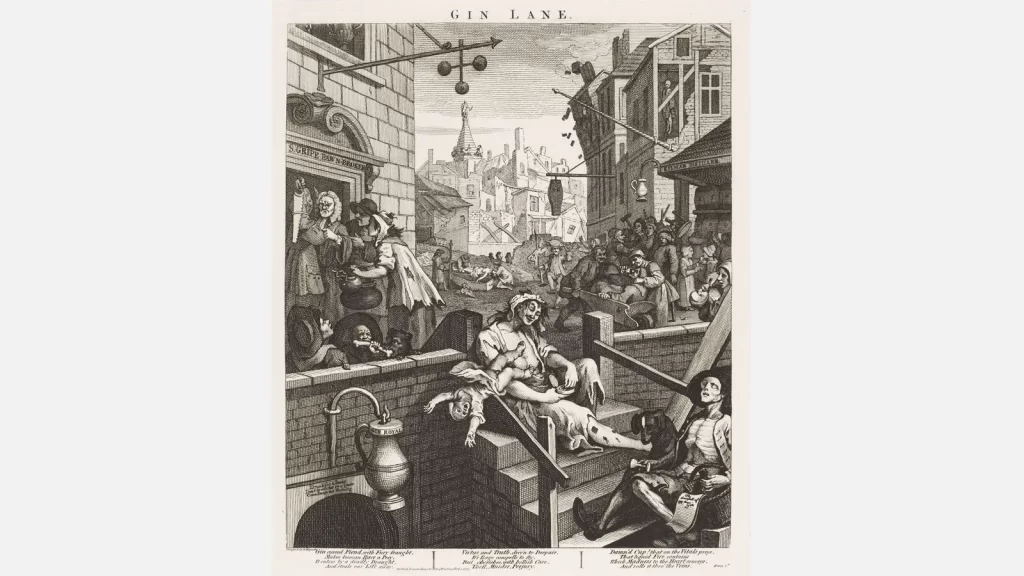Parenting values, models, and expectations in images
written by art historian & curator
Raising children has always been a complex and multifaceted task. Our lives are a dynamic mix of challenges and experiences, technological immersion, global communication, distraction, and opportunities. Humans experience the best living standards regarding commodities, health care, access to information, cultural awareness, and education. Although the overall situation is much better and raising children is much easier than before, social demands and parenting challenges seem to be higher, more stressful, and address a wide spectrum of physical and psychological issues. Today a good parent must show some basic understanding of parenting styles, parenting practices, physical and psychological knowledge, child needs, and early education while shaping a healthy environment for the kids and preparing them for the future world. The entire experience can be daunting for parents, and as we see in the current demographics, fewer and fewer couples have children.
Join our free online talks:
Nowadays, each family has its unique dynamics, values, and circumstances that shape their parenting choices. They strive to provide a nurturing and supportive environment that allows children to grow, thrive, and become well-rounded individuals. Some parents choose traditional education paths, while others believe in the beneficial features of alternative parenting styles, such as homeschooling, unschooling, and worldschooling. In this way, they challenge traditional notions of education and offer unconventional learning and child development methods. We will see how humanity changed its perception of education over the years and what is the balance between parenting and expectations.
Behaviour Patterns in the Past
In many traditional societies, child-rearing was a collective responsibility shared among extended family members and the community. Children grew up in close-knit communities where multiple generations lived together or nearby. This allowed for shared caregiving, support, and the passing down of cultural values and traditions. In most societies, children began learning practical skills at an early age. Compared to modern times, childhood in the past was often shorter, as children were expected to contribute to household chores and work, limiting their time for play and leisure activities. They might be apprenticed to a trade, engage in agricultural work, or help with family businesses. Work was seen as a means of preparing children for adulthood and instilling a sense of responsibility. Boys and girls were often socialized differently, with boys encouraged to be independent, assertive, and learn practical skills, while girls were taught domestic tasks and expected to conform to societal norms of femininity and modesty. Formal education was not universally available in the past, particularly for lower socioeconomic classes. Thus, only children from privileged backgrounds might have received private tutoring or attended schools. Generally speaking, education was primarily focused on moral instruction, basic literacy, and some practical skills.

In aristocratic families throughout history, education was a key component of upbringing and was often tailored to prepare children for their roles as elite class members. Aristocratic children were typically provided with private tutors who imparted a wide range of knowledge and skills. Tutors were often highly educated individuals, specializing in various subjects such as language, history, literature, mathematics, music, and the arts. They provided individualized instruction tailored to the child’s abilities and interests. Much of the instruction focused on Greek and Roman literature, philosophy, and languages. Aristocratic families often exposed their children to travel and cultural experiences. They would embark on grand tours of Europe, visiting important cultural and historical sites, and meeting influential individuals. These experiences broadened their worldview, exposed them to diverse cultures, and helped develop a cosmopolitan outlook. This went hand in hand with courtly etiquette education and proper manners. They learned how to conduct themselves in different settings, engage in polite conversation, and navigate the complexities of high society. Emphasis was placed on developing eloquence, grace, and refined social skills.
Child Education in Images
Paintings have been used for centuries to depict various aspects of human behavior and emotions. From love, sorrow, grief, joy, and celebration to death, art explores the complexities of behavioral patterns, creating lasting impressions and provoking contemplation. Child raising was an important aspect of family life, and their representations offer a glimpse into the parenthood practices, cultural norms, and societal expectations of the time.
The English painter William Hogarth, who lived during the 18th century, was a satirist and address the theme of child-raising in his paintings. He was known for his social commentary and depictions of various aspects of contemporary life, including family dynamics and the upbringing of children. Hogarth’s works often had moral and didactic undertones, highlighting the importance of responsible parenting and the potential consequences of neglect or poor choices in child raising. Through his satirical and critical approach, he aimed to raise awareness and provoke reflection on societal issues, including the well-being of children.
”Gin Lane” is a print in which Hogarth critiques the societal consequences of the widespread consumption of gin. He depicts a scene of squalor and neglect, with a mother portrayed as negligent, focused on drinking rather than caring for her child. This print serves as a social commentary on the detrimental effects of alcoholism and its impact on child welfare.
In Hogarth’s series of paintings and engravings called ”Marriage A-la-Mode,” he explores the consequences of ill-matched marriages, depicting the impact of parental choices on the lives of children. Through this series, Hogarth critiques the aristocracy and the neglectful parenting that can result from loveless and arranged marriages. He portrays children as victims of their parents’ poor decisions and highlights the negative consequences on their well-being and future.

French artists had a rather idyllic view of child raising. During the 18th century, Rococo art often depicted scenes of upper-class family life, showcasing mothers and children engaged in leisurely activities. Jean-Baptiste Greuze painted sentimental and idyllic portrayals of mothers tenderly caring for their children, emphasizing maternal love and virtue. His paintings capture moments of familial intimacy, where children are often depicted as cherished members of the family, enjoying the pleasures of childhood. ”The Breakfast” painted by Francois Boucher depicts a family scene, in which children interact with their parents, enjoying a meal together. The inclusion of children in this painting suggests the joys associated with raising children. At the same time, every moment spent together is an occasion for etiquette learning and communication skills development.
Jean-Baptiste Le Prince was known for his genre scenes and landscapes, often capturing the everyday life of ordinary people. He portrayed children and family dynamics in his paintings, placing them in domestic settings where parents and children interacted. Le Prince’s paintings presented a relatively realistic depiction of ordinary family relationships, offering glimpses into the routines and activities associated with child raising. ”La Toilette des Enfants” (Children’s Toilette), is a work in which Le Prince depicts a domestic scene where a mother is tending to the hygiene and grooming of her children. Similarly, in Jean-Baptiste Huet’s painting ”Children Feeding Chickens”, young children are depicted feeding and interacting with farm animals, illustrating a connection to the natural world and rural life. This painting captures a moment of simple pleasure and the engagement of children with their surroundings.
Parenting and expectations
Parents today are raising their children in diverse and varied ways, influenced by a range of factors including cultural norms, personal beliefs, and the social and technological context of the times. They prioritize active involvement in their children’s lives. Parents strive to be present, engaged, and emotionally available, fostering a strong parent-child bond. A shift toward positive parenting approaches is observed, focusing on empathy, communication, and fostering a nurturing environment. They encourage age-appropriate autonomy, critical thinking, and decision-making skills while also implementing safeguards and guidelines to protect their well-being.

Education is highly valued, and parents often prioritize providing their children with quality educational opportunities. Recognizing that every child is unique, today parents strive to understand their children’s individual needs, strengths, and interests. They tailor their parenting approaches to meet their children’s specific requirements, fostering their personal growth and development. Many parents expose them to different cultures, promote tolerance and acceptance, and engage in conversations about social justice issues. Alternative ways of education have grown in popularity over the last decades and parents are more interested in the physical, emotional, and mental well-being of their children rather than the accumulation of information.
Parenting is a complex and lifelong journey, and the fulfilment of expectations is subjective and can change over time. Each parent has their own set of expectations and goals for themselves and their children, influenced by personal beliefs, cultural factors, and individual circumstances. They might see their children thriving, developing positive qualities and skills, and forming strong relationships. They may feel a sense of accomplishment and satisfaction in seeing their children grow into responsible, caring individuals.

However, it is also common for parents to experience a sense of falling short of meeting their expectations. Parenting is challenging, and parents may face obstacles and unforeseen circumstances that can make it difficult to meet their desired goals. Parents might feel a sense of guilt, self-doubt, and even disappointment if their children face challenges or if the journey does not align with their initial expectations. For me, parents must approach parenting with a compassionate and realistic mindset. Recognising that no parent is perfect and that there will be ups and downs along the way can help alleviate undue pressure and self-criticism. What matters most is the love, care, and effort that parents put into raising their children and providing a supportive and nurturing environment.
GET MORE FROM LEVEL



Leave a Reply